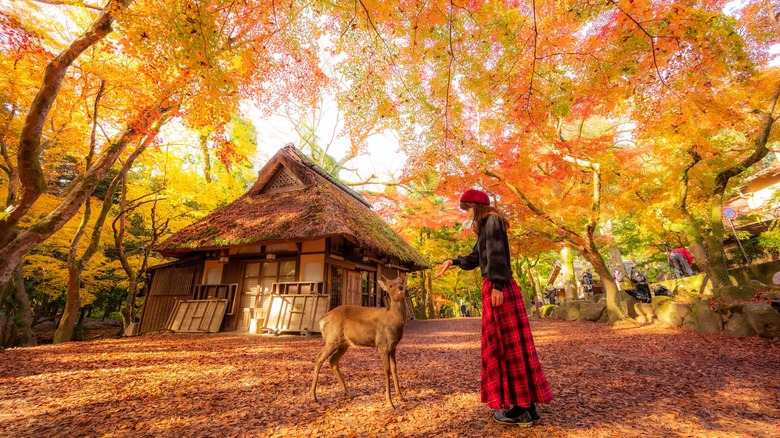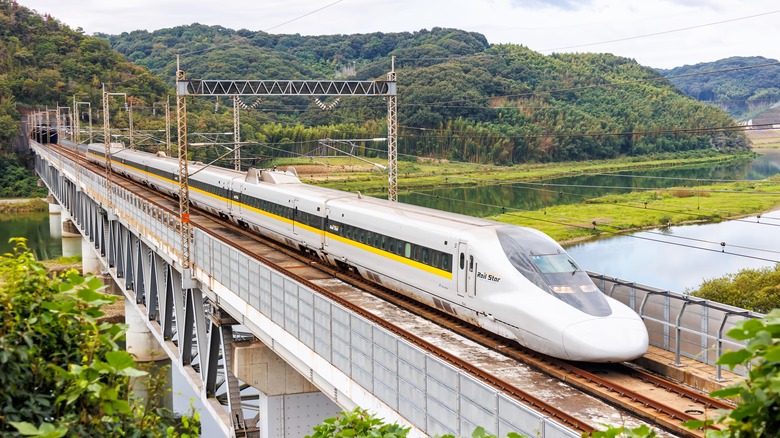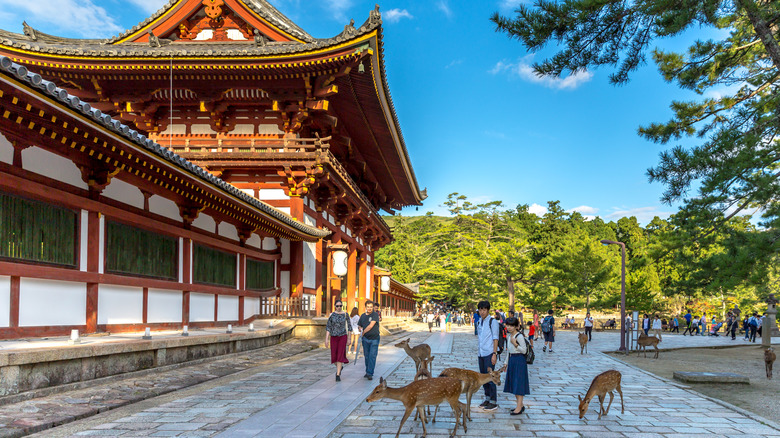The Laidback But Culture-Rich Japanese City To Visit If You Want To Avoid Tokyo Crowds
Tokyo, Osaka, and Kyoto might get all the attention from would-be travelers to the "Land of the Rising Sun", but Japan has hundreds of less-visited and equally stunning destinations scattered across the archipelago. One of these lesser-visited enclaves is Nara, which is known for its beautiful, UNESCO World Heritage sites. But this city is probably most well-known for its famous animal inhabitants. That's right — the city is full of more than a thousand friendly deer.
Nara offers so much more than its famous wildlife and is truly something to fawn over. All puns aside, Nara is worth a visit for its rich history and striking temples and shrines alone. Once Japan's first permanent capital city, Nara is now a medium-sized city (by Japanese standards) in the center of the Kii Peninsula. Although well-known on the Japanese tourist scene for the friendly deer that roam the city, visitors will discover so much more than simply curious cervids. You'll explore famed temples shrouded in mist, intricately curated gardens, and ancient monasteries.
All of these features make Nara the perfect alternative to to Japan's increasingly popular cities and resorts. Here are a few tips to get started planning your day trip to the home of Japan's holy deer.
Getting to Nara from Tokyo
Getting to Nara from Tokyo is as easy as hopping on the shinkansen, also known as Japan's bullet train. These futuristic, light speed railways take off from two of Tokyo's main train stations: Tokyo and Shinagawa. Visitors planning their trip to Nara can book train tickets via Japan's official rail website.
What many travelers don't realize is that there are three different kinds of shinkansen train in Japan: Nozomi, Kodama, and Hikari. Those who are looking to travel as quickly and efficiently as possible should be sure to hop aboard the Nozomi train from Tokyo to Kyoto. If you happen to be using the Japan Rail Pass, you'll need to take the Hikari train to Nara.
The entire journey will take about three hours in total — 2 hours and 45 minutes to reach the ancient city of Kyoto from Tokyo and another 45 minutes to travel from Kyoto to Tokyo. Kyoto is one of the most famous cities in all of Japan and well worth a stop in its own right if you want to split up the trip, or visit Nara as a day trip from the "City of Ten Thousand Shrines".
After arriving at the Kyoto Train Station by shinkansen, you'll need to switch to a regional train to reach Nara.
How much time do you need to experience Nara?
Those who favor this gorgeous Japanese city over Tokyo come on a day trip from nearby cities like Osaka and Kyoto. It's possible to see the main sites, including Nara's bowing patron saints, within 5-6 hours.
If you're coming for the Instagram-famous deer, head straight for Nara Park. Located in the center of town, this is where you'll see visitors feeding them crackers (also called shika senbei), taking pictures, and, yes, exchanging bows with these almighty creatures.
Nara's status as one of Japan's original capital cities means that it's also decorated with temples, shrines, and monasteries. Called the Seven Great Temples of Nara, travelers can still visit all seven of these UNESCO World Heritage sites, although some are more splendid than others. Start with the idyllic Tōdai-ji Temple, built in 752. This religious icon is located right on Nara Park's northern edge. Continue your explorations of Nara's seven temples at the Horyuji Temple, which is one of the oldest in Japan and includes a 5-tiered, wooden pagoda that many experts believe is the oldest wooden building in the world.
If all the grazing deer are starting to make you hungry, seek out some of Nara's foodie specialties. Persimmon leaf sushi, known as kakinoha-sushi, is a local delicacy made with salted mackerel and wrapped in persimmon leaves. Wash it down with Nara's delicious, locally made sake that's known for it's sweet taste.


